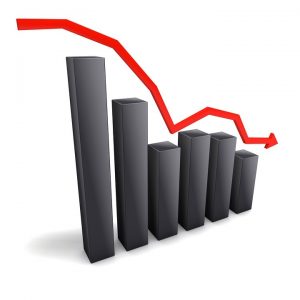Will the Australian Dream Lead Us Into a Debt Crisis?
 Australia has one of the highest household debt levels in the world. Our primary motivation for borrowing has been to fulfill the Aussie home ownership dream. As house prices have surged, so has the need to borrow big.
Australia has one of the highest household debt levels in the world. Our primary motivation for borrowing has been to fulfill the Aussie home ownership dream. As house prices have surged, so has the need to borrow big.
While credit card and personal loan debt has remained relatively stable, mortgage debt has skyrocketed. According to recent data from APRA, Australian owner-occupier home loan liability is now at an all-time high – more than doubling in the last 11 years. In December 2004, the outstanding mortgage debt per Australian adult was $20,802. By December 2015, that figure had ballooned up to $49,165.
In light of our proclivity to borrow, famous Australian economist Steve Keen ranked Australia in a recent Forbes article as number two on the list of seven nations that are most likely to face a debt crisis and recession in the next three years. The only country more likely is China, which also doesn’t bode well for our economic future.
Steve Keen has been strongly influenced by the writings of Hyman Minsky, who I’ve written about in this post. They both believe the primary cause of a financial crisis is the accumulation of private debt.
The following is a three-point summary of how Keen sees the next few years playing out.
1. We can’t borrow like this forever.
The foundation of Keen’s prediction is his assumption that our current borrowing trajectory is unsustainable.
While lending to investors has fallen sharply, the drop has been almost entirely offset by an increase in owner-occupier lending. According to the RBA’s latest data, mortgage debt rose by 0.5 percent in January, making the annual increase 7.3 percent. This level of growth is below last year’s spring peak of 7.5 percent, but well above the 5.5 percent average from 2010 to 2014.
What kind of debt growth in sustainable? Keen believes that only a growth rate at or below the growth rate of the overall economy – measured in terms of GDP – is sustainable. A growth rate above that of the overall economy is not sustainable.
Our economy is currently growing at about three percent per year, so Keen sees anything above that as unsustainable. Our debt is now growing at over twice the rate of our economy, and has been outpacing GDP for decades.
So why does he believe this is unsustainable? Think about your household finances. If your personal debt is growing faster than your income, then eventually you’ll be unable to service your loans. We can only borrow so much, until our income increases.
This is exactly what Keen expects to happen on a broader level. As a nation, we’ll soon reach the point where there’s not enough margin left in our collective budgets to afford loan payments. People will stop borrowing, and credit growth will decline, and possibly even go negative.
Here’s a graph showing the growth in our economy in relation to the growth of private debt:

Keen expects to soon see the blue line fall near or below the red line. We nearly got there in 2010, but government stimulus bailed us out.
2. When we’re no longer willing or able to borrow, the economy will shrink.
The growth of any debt-based economy will always be dependent upon credit growth. We need people to borrow and spend in order to keep the economy growing at the current pace. In other words, the only reason the red line is trending up is because the blue line is pulling it along.
This is exactly why the RBA and virtually every other world central bank has been lowering interest rates. The aim has been to spur people to keep borrowing more and more in the hope of stimulating economic growth.
Central banks must keep credit growing faster than the overall economy in order to reach their stated goals for inflation, GDP-growth and maximum employment. The problem, according to Keen, is that perpetual credit growth is impossible to sustain.
If Keen is right, and credit growth soon falls or even worse, goes negative, there will be less demand for goods and services in the economy because people will have less money available to spend. After all, thanks to our fractional-reserve banking system, it’s the banks that create new money through lending, but when banks take in more money through repayments than they lend out, the money supply shrinks.
A shrinking money supply means that demand is draining out of the economy. Wages and capital gains must therefore decline. When demand falls, the economy begins contracting, and this is what economists call a recession.
3. When the economy shrinks, asset prices will fall.
 The unintended side effect of an economic system that encourages debt through low interest rates is higher asset prices. When you make money cheap and easy to borrow, you encourage people to take on greater risk to achieve higher returns. People start investing more, sometimes unwisely, in assets like shares and real estate, because the risk-free return is so low.
The unintended side effect of an economic system that encourages debt through low interest rates is higher asset prices. When you make money cheap and easy to borrow, you encourage people to take on greater risk to achieve higher returns. People start investing more, sometimes unwisely, in assets like shares and real estate, because the risk-free return is so low.
As real estate becomes more attractive, it also becomes more expensive. This means people must borrow more money to pay for houses. Eventually, when the borrowing must stop, so does the buying. Demand falls, and then the value of the underlying assets falls, too.
This can be especially painful for those who buy during times of euphoria, when no one believes that asset prices will ever fall. As legendary investor John Templeton said, “Bull markets are born on pessimism, grow on skepticism, peak on optimism and die on euphoria.”
Typically, it’s the last ones who buy just before asset prices fall who are the ones who borrow the most, which means they are also the ones who have the most to lose.
According to Keen, and Mensky, you’ll know the party’s almost over when people who buy assets can only do so on interest-only loans. They must borrow so much to aquire the asset that they can’t afford to reduce their debt through principal repayments. They justify interest-only repayments on the assumption that asset prices will always increase, or that incomes will be higher in the future. They’re speculating on either asset or wage inflation, or both.
According to ASIC, one in four owner-occupier loans in Australia are interest-only. In a recent industry crackdown, the corporate regulator found that demand for interest-only loans has grown by 80 percent in the past three years alone. It seems like the number of people who can afford to pay down their principal is shrinking fast.
 Most interest-only loans offer a period, typically up to five years, before they require additional principal repayments. What happens if these loans roll over and borrowers can’t afford the higher monthly payments?
Most interest-only loans offer a period, typically up to five years, before they require additional principal repayments. What happens if these loans roll over and borrowers can’t afford the higher monthly payments?
Some banks don’t seem to care. ASIC found the following astonishing results after a lending industry review:
- In more than 30 percent of cases, there was no evidence the lender considered whether the applicant could afford their repayments over the long term.
- In 20 percent of cases, the lenders did not consider the actual living expenses of the applicants.
- In 40 percent of cases, the lenders had incorrectly calculated the affordability of the loan.
While Steve Keen believes the end of days for credit growth is soon approaching, he admits the timing of the inevitable is impossible to predict. No one knows exactly when people will stop borrowing or banks will stop lending.
We may even see our government kick the can further down the road, just as they did in 2008, through hard-core stimulus measures. If recent patterns of central bank intervention are any indication, property may have a few solid years of growth remaining.
Or perhaps not. As Keen says, the timing of “the inevitable” is impossible to predict.
What Do You Think?
Is Steve Keen right? Is our current level of credit growth unsustainable? Is deflation and an asset price correction on the horizon? What do you think this will mean for real estate values?
Or do you side with central bankers? Is the level of private debt irrelevant to the health of our overall economy? Can regulators save the day by devaluing our currency? If so, how high will property prices go?
Comments
Got something to say? Post a comment...
You must be logged in to post a comment.





I think Keen is right. The system is broken. The “fractional reserve” / fiat / Mammon banking system is destined to fall, like Babylon. The conspiracy theorist in me says that the global elite know that day is coming, in fact, they’re herding us all that way. They saw the GFC coming and profited immensely from it. But for the elite it’s no longer just about money, it’s about power and control.
“Let me issue and control a Nation’s money and I care not who makes its laws.”
Amsel Bauer Mayer Rothschild, 1838
Totally agree. The hard part is predicting when the party stops – it’s akin to a game of musical chairs – no one can predict exactly when the music will stop but when it does……..!!!!
I am still looking for my next good property deal, but I am the fussiest I have ever been. This article and graph are illuminating. My danger sense which was already on alert is pushed higher. I am not good at sitting on my hands and my money but that is the way I am leaning.
Definitely a unique time. Just be aware that the danger of leaving cash in the bank is its loss in buying power. If home prices are stagnant for 10 years but between now and then wages and goods/services go up significantly, it’s essentially the same impact on real wealth creation as if home prices came down and wages stayed the same.
If the market is stagnant for 10 years, then putting money in the bank would still be better than buying negatively geared real estate, unless of course interest rates go negative too.
From a long term historical view of house price to medium income levels, I expect future house prices to reduce by 30% plus.
When/ if property prices fall to more realistic levels, will we see a general return of positively geared properties?
If you’re right, a $600k property renting for $425 per week today (gross yield of 3.7%) would then be worth $420,000. Assuming the same rent, the gross yield is now 5.3%. After operating costs, that’s still negative based on today’s mortgage interest rates, ignoring depreciation.
Another possibility is home values stay the same for a while and rents/wages go up. Rather than asset depreciation, you have price inflation, which diminishes the real value of everyone’s unrealised gains.
Just take a look at what this guy had to say in 2007 about house prices. I have no idea why anyone would place any weight on what he has to say.
I bet he is so glad he sold his home in 2007, just before the big crash,lol. If everyone took this jokers advice…where would we all live?
Tim, Had the markets been allowed to work out their excesses freely in 2007/2008 there would have been considerable lowering of house prices in Australia.
Massive world central bank money printing (debt) produced a stimulus to keep economies from going under … did you predict this would happen in 2007?, if not, your investment skill was luck.
I feel we are in a similar situation now as in 2007 prior to the 2007/2008 financial crisis, only more dangerous, can we rely again on another stimulus from somewhere to prop up property prices …
I think your point is undeniable, and Glenn Stevens would agree.
But will another stimulus prop up real estate? It’s anyone’s guess. We’re in uncharted economic waters. Even if interest rates are cut again, which I expect, it appears to me that APRA and the Government will do whatever necessary to keep current house prices flat.
That said, as long as new money is being created, it has to flow somewhere. It will be tough for them to keep it flowing away from real estate. Just look at China.
But I think Keen is onto something. The debt-financed party can’t go on forever. The problem with timing the market is the party has already lasted longer than many economists thought it could.
Hi Jason , A good article .
I think there is a time for everything , and the time for caution is always with us. I think Keen speaks common sense.However, it is still prudent to invest – but with an eye to the future with even more caution than may have been the case 12 months ago. Although Keen was wrong in 2007, it does not necessarily mean he is wrong now.
Chris
Great points. Thanks Chris.
Isn’t there another big difference between now and 2007 in that the economic situation in China now is not what it was in 2007?
Interest rates have been going down so we are able to borrow more for housing which has driven the price of housing up.If interest rates go up property values will fall.The overbuilding of apartments will cause a fall in their value which will flow onto the value of houses as people see better value in buying apartments.Investors are seeing housing as overvalued and are pulling out of the market.The share market has fallen so it is only a matter of time before the property market falls which is usually what happens.That said Peregian Springs on the Sunshine Coast looks like good value at the moment.
I too predicted 2008 a crash.
I was wrong and laughed at.i invested in usa instead of australia in 2011.
My friends who bought property in 2008 to2011 in melbourne made lots of money.
I believe it was luck for them because of government intervention by printing money without producing anything.
I will continue to invest because of skills not luck.
Bought development side in melbourne in 2014 and will generate growth of over 40%.
Good work Bernie. Still plenty of profits to be had through adding value. I’m feeling the Bern!
This argument is full of the typical flawed thinking of someone who didn’t understand year one economics at Uni and decided to blog. “but when banks take in more money through repayments than they lend out, the money supply shrinks.” this is essentially saying that everyone pays back their loan immediately???? I don’t know where to start. False logic.
The other common thing which is ignored in these arguments is inflation over time. If the average price of a property doubles every 7-10 years then everything staying relatively the same, the average debt should double also. So 20K person in 2004 would become 40-50K in 2015, especially as there have been several peaks in the property cycle during that time.
What was the cost of a can of coke in 2004????
Tyke
Not sure where the false logic is. It’s a well-known fact that in a fractional reserve banking system, new money is created when banks lend. Thus, the money supply goes up by the amount of the loan. As loans are repaid, that new money is destroyed and there is less money in circulation, unless new money (new loans) are created to replace the old ones.
No one is saying that everyone pays back their loans immediately. It’s simply a question of whether or not in the broader economy, new loans are being written faster than the old ones are being paid off. Keen’s point is simply that the money supply (new debt creation) can not perpetually grow faster than GDP.
Regarding your comments on inflation, be sure you don’t confuse asset price inflation with consumer and wage price inflation. Absolutely debt growth is tied to growth in property prices. Similarly, the price of goods and services and wages is tied to growth in GDP.
Again, Keen’s point is that income inflation must match debt growth or else the growth in asset prices is unsustainable. Sounds pretty logical to me.